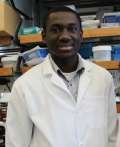Alumni
Manon Mottet 
PhD student (2017-2022)
Single-cell dynamics of host-pathogen interactions
In the lab, we study the host and pathogen factors involved in mycobacterial infection by using the macrophage surrogate D. discoideum as a host. Intrinsic cellular defences play an important role during infection, and I was particularly interested by their roles in the establishment of the replication niche, its breakdown and the restriction of cytosolic bacteria. Furthermore, to get a deeper understanding of the mechanisms of mycobacterial infection, we need to characterize the infection process at the single cell level. This is why I was also studying the dynamics of the host-pathogen relation using a microfluidics system allowing the capture and observation of infected cell and a long-term integration and quantification of infection parameters.
Krikor Bared Eblighatian
Bachelor summer internship (2018), Master student (2020-2021)
Using and optimizing Flipper probes to label the MCV in D. discoideum and to measure membrane tension upon hyperosmotic shock, upon sterile damage and during M. marinum infection.
Fluorescent membrane tension reporter (Flipper-TR) is a novel planarizable push-pull probe which has mechanosensitive properties that allow the live imaging of membrane tension with fluorescent lifetime imaging microscopy (FLIM). It has been developed by Prof. Matile’s lab and already been used in other labs to demonstrate the dependence of certain biological functions on membrane tension in mammalian cells. Furthermore, different organelle-specific Flipper probes have already been developed. The aim of my project wass to find the best Flipper probe to label Mycobacterium Containing Vacuole
(MCV) in D. discoideum. Optimizing the existing options by synthetizing probes with modified headgroups for better targeting to MCV have been a part of the project. Successfully labeling the MCV at different stages of M. marinum infection with Flipper probe will allow the study of membrane damage and repair mechanisms as well as investigating if membrane tension has a role in activating ESCRT and autophagy machineries. A part of the project have been carried out in Prof. Matile’s lab.

Cristina Bosmani
PhD student (2013-2018) and Postdoctoral fellow (2019-2020)
Understanding the role of vacuolins and their possible partners in the biogenesis of the Mycobacterium niche, and RNA-seq as a high throughput tool to monitor the transcriptional response during infection
Vacuolins are closely related to the mammalian flotillin/reggie proteins, which were shown to be involved in diverse mechanisms, such as the translocation of Glut4 transporters to the plasma membrane and more recently in E-cadherin and TfR recycling. Reggies/flotillins were also shown to interact with Rab11 and SNX4, known to be involved in recycling. In the lab, I am investigating the role of vacuolins and their possible partners in Dictyostelium, in the specific context of an infection with Mycobacterium marinum, a close cousin of the human pathogen Mycobacterium tuberculosis. Using my experience with RNA, I am also working in setting up an RNA-sequencing-based method to monitor the transcriptional response of both the host and the pathogen during an infection. We will then use this method to characterize the putative modes of action of different compounds identified by the drug screening and that have an effect during the infection, by comparing the transcriptional profiles.
Elena Cardenal Muñoz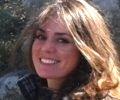
Postdoctoral fellow (2014-2018) and Scientific Collaborator (2019-2020)
Role of TOR in immunity against mycobacterial infection
"My main goal is to elucidate the putative role of TOR (target of rapamycin), the main kinase regulating cell growth and autophagy in eukaryotes, during mycobacterial infection. It is known that M. tuberculosis is controlled by autophagy and that, at the same time, more virulent mycobacteria are able to defend themselves against the autophagic process by activating TOR. Taking advantage of our Dictyostelium-M. marinum model, I want to study whether and how the bacterium leads to a TOR response to survive and proliferate inside Dictyostelium and, if so, how that response affects growth and phagocytic host rates and thus its immune response."
Kevin Assoumou
Master student (2018-2019)
Role of autophagy and ESCRT in membrane repair during mycobacterial infection?
"I joined the Soldati lab to learn more about the molecular
mechanisms of phagocytosis in host-pathogen interactions. I will be working with Elena Cardenal-Muñoz and Ana Teresa López-Jiménez to study the autophagy and ESCRT membrane repair mechanisms of Dictyostelium discoideum against Mycobacterium marinum infection."
Caroline Barisch

Postdoctoral fellow (2011-2015) and Maître assistante (2016-2019)
How do lipids influence the infection of Dictyostelium discoideum with Marinum marinum?
"I want to use the well established host-pathogen system of our lab to gain further insight on the role of lipids during infection. Today there a many indications for an important role of lipids in various stages of host-pathogen interactions: (i) cholesterol for example is required for at least one route of entry of Mycobacterium tuberculosis into macrophages, (ii) for Mycobacterium leprae it is known that it resides and replicates during leprosy in enlarged phagosomes completely filled with lipids, (iii) another hint that lipids play a role during the infection is given by the fact that lipid droplets, the energy depots of the host cells, have been found either in close contact or in the pathogen-containing vacuole. But how and why the pathogens manipulate the host’s lipid homeostasy for their own purpose has to be addressed. Besides the lipids from the host, pathogen lipid species also play a role during the infection."
Louise Lefrançois
Postdoctoral fellow (2016-2019)
Transposon sequencing screens for Marinum marinum mutants with growth advantage or disadvantage during infection of Dictyostelium discoideum or macrophages
"My project uses the well-established host-pathogen system of our lab (Dictyostelium-M. marinum) to identify bacterial and host genes involved during infection. To address this question, I use the Tn-seq and REMI-seq methods to generate libraries of mutant bacteria and mutant hosts, respectively, coupled with high throughput sequencing technology as a screening. By comparing two selective conditions (e.g. in vitro vs. during infection), this approach will allow us to identify essential genes or pathways involved in the establishment of intracellular mycobacterial infection regarding both bacteria and host."
Louis Hellequin
Master student (2018)
Biological validation of computational agent-based models of Dictyostelium discoideum aggregation and collective migration phases
"While undertaking the MSc in Biochemistry at the University of Geneva, I had the opportunity to collaborate with the Soldati Group on the biological validation project in conjunction with Professor Di Marzo Serugendo and Mohammad Parzhikar at the Centre Universitaire d’Informatique. I created an imaging protocol of Dictyostelium discoideum aggregation/streaming behavior in the first phases of its development cycle, to help the validation of computational models."
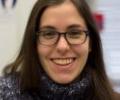
Ana Teresa López Jiménez
Master student (2011-2012), PhD student (2012-2017) and Postdoctoral fellow (2018)
The role of discoidins as cytosolic PRRs and single cell imaging to understand the mechanisms of mycobacterial infection
"A number of host and pathogen factors play a tight interplay to determine the fate of infectious processes. In the lab, we are studying the factors involved in mycobacterial infection by using the macrophage surrogate Dictyostelium discoideum as a host. I am especially interested in the discoidin proteins, which are N-acetyl-galactosamine binding proteins in D. discoideum. In analogy to mammalian galectins, discoidins have been implicated in several processes, such as cell migration or cell adhesion. In the lab, I want to study the role of discoidins as cytosolic PRRs to recognize PAMPs or DAMPs resulting from bacterial-induced membrane damages. Infected cells constitute a very heterogeneous population. Therefore, to get a deeper understanding of the mechanisms of mycobacterial infection, we need to characterize the infection process at the single cell level. In order to do so, I also want to perform live microscopy of individual infected cells, using different host and bacterial fluorescently-tagged factors. Long term imaging would enable us to reconstitute the sequence of events that determined the fate of infection."

Joe Dan Dunn
Maître assistant (2014-2017)
The role of reactive oxygen species in innate immune responses
"Reactive oxygen species (ROS) are key components of the immune response to intracellular pathogens. Deleterious mutations in the ROS-generating phagocyte NADPH oxidase (NOX) underlie chronic granulomatous disease, marked by severe, recurring bacterial and fungal infections. Dictyostelium discoidium, a genetically tractable amoeba that preys on bacteria, encodes NOX homologs that are involved in signaling and immune responses during its multicellular development cycle. I am using Dictyostelium as a model phagocyte to delineate the events leading to ROS production and to identify ROS contributions to the immune response to Mycobacterium infection."
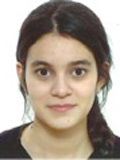
Imen Ayadi
Master student (2016)
Study of CueA and CnrD, two putative selective autophagy adaptors in Dictyostelium discoideum
“I did a bachelor in biology at the University Claud-Bernard in Lyon and then I started a bi-disciplinary master in biology and chemistry at the University of Geneva. I chose to do my master internship in the Soldati lab because I was interested in host-pathogen interaction using Dictyostelium discoideum and Mycobacterium marinum as a model to understand the tuberculosis infection in mammalian cells. Under the supervision of Elena Cardenal, I was studying the putative autophagic receptors CueA and CnrD in Dictyostelium.”
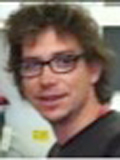
Sébastien Kicka
Postdoctoral fellow (2010-2013) and maître assistant (2014-2016)
Establishment of a medium throughput screen to select in vivo new compounds that can help curing Mycobacterium infection
“I joined T. Soldati lab in 2010, having the opportunity to dissect M. marinum infection in our favorite organism in a medium throughput screen in order to select in vivo new compounds of interest (antibiotic or cell defense booster) that can help curing Mycobacterium infection. We also want to combine microscopy assay (with specific steps markers of infection) and using advantages of known mutant (from host and pathogen) to better understand mechanisms underlying host-pathogen interaction.”
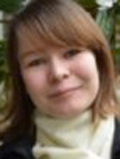
Vera Kamaletdinova
Master student (2015-2016)
Deciphering the role of Zn2+ and Fe2+ transporters during infection of D. discoideum with M. marinum
“Transition metals are incorporated into metalloproteins including metalloenzymes, storage proteins and transcription factors. They are involved in many crucial biological processes and are therefore necessary for the survival of all living organisms. However, high concentration of free transition metals can be toxic. It is known that macrophages infected with mycobacteria restrict access of essential metals, such as Fe2+, into the bacteria-containing vacuole. Interestingly, it has recently been suggested that macrophages can increase the concentration of Zn2+ and Cu2+ in the pathogen-containing vacuole, possibly as a tentative to poison the bacterium (T. Soldati & O. Neyrolles, 2012). These processes are considered to be representative of the concept of “nutritional immunity”.In our lab, we use Dictyostelium discoideum / Mycobacterium marinum as a host-pathogen system to study mycobacterial infection. The goal of my project is to test the hypothesis that D. discoideum uses zinc to poison intraphagosomal mycobacteria during infection. The main questions of my study:• How is zinc transported into the mycobacteria-containing vacuole?• Is zinc essential for the intracellular killing or control of the mycobacteria population?”

Xuezhi Zhang
Ph.D student (2009-2013) and postdoctoral fellow (2014-2016)
Study of reactive oxygen species and NADPH oxidases in an amoeba model system
“The purpose of my PhD project is to study the biological roles of NADPH oxidases (NOX) and Reactive oxygen species (ROS) in the model organism Dictyostelium discoideum, and especially explore their potential impact on the mechanisms of host-pathogen interactions.ROS comprise a range of reactive and short-lived, oxygen-containing molecules, which are dynamically inter-converted or eliminated either catalytically or spontaneously. ROS are involved in a wide variety of biological processes such as host defense, signaling, tissue development and response to injury as well as in diseases such as hypertension and cancer. The social amoeba, Dictyostelium, is a powerful and popular model to study cell intrinsic mechanisms of the innate immune response. Indeed, Dictyostelium and human phagocytes share a surprisingly high level of conservation in molecular machineries responsible for bacteria sensing, engulfment and killing. The homologs of proteins and enzymes related to ROS production or detoxification, such as NADPH oxidases (NOX), catalases, superoxide dismutases, can be found in both human and Dictyostelium. We developed a set of protocols which provide an easy and versatile solution to monitor various ROS and their localization, and further give insights into ROS-related cellular mechanisms. By using OxyBurst Green-coated beads and live microscopy, we are able to monitor the whole process of phagosomal ROS generationafter uptake of beads by Dictyostelium cells, and provided a new approach to study mechanism of intraphagosomal killing of bacteria. We optimized medium-throughput assays by using Dihydroethidium and Amplex UltraRed in Dictyostelium, to measure intracellular superoxide and extracellular H2O2 production, respectively.In order to obtain a more comprehensive understanding of the biological functions of NOX enzymes in Dictyostelium, the evolution history of this enzyme family is of particular interest. Our collaboration with Dr. Brigitte Boeckmann from the Swiss Institute of Bioinformatics provided useful information for the functional study of NOX enzymes in Dictyotestelium as well as various other organisms. We integrated the structurally conserved NOX and FRE (Ferric Reductases) proteins into a newly named FRD superfamily, and identified three amino acids specifically conserved among (almost) alll members of the NOX family, but absent from FREs. We hypothesise that they might play an important role in the functional shift from metal reduction (FRE) to ROS generation (NOX), in which the transmembrane electron acceptor changed from ferric iron to oxygen. The resulting paper is published in PlosONE.”

Valentin Trofimov
Ph.D student (2010-2015) and postdoctoral fellow (2016)
Identification and characterization of novel antitubercular compounds
“The project includes the establishment of assays to monitor antibacterial activity using Dictyostelium discoideum and Mycobacterium marinum as a model of host-pathogen interaction, screening of chemical libraries for antitubercular compounds and discriminating activities acting specifically either on Mycobacterium or Dictyostelium, followed by characterization of the place and time of actions of the compounds. I expect that our effort will lead to the identification of antibiotic activities as well as antivirulence compounds and host defense-boosters, ultimately leading to novel therapies to treat mycobacterial diseases”
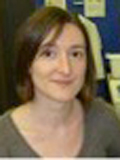
Aurélie Guého
Master student (2007), Ph.D student (2009-2013) and postdoctoral fellow (2014-2015)
Understanding how pathogenic Mycobacteria manipulate the phagosomal pathway using proteomic tools
“In animals, innate immunity is the first line of defence against invasion by micro-organisms. Phagocytosis is one of the major process by which professional phagocytes engulf and kill microbes. It consists in the engulfment of the bacteria in a vacuole called the phagosome. This phagosome matures by fusion with endosomes and lysosomes, which bring proteins necessary for the acidification of the phagosome and the digestion of the ingested material. But in the case of an infection with Mycobacterium tuberculosis, the pathogen responsible for tuberculosis, the maturation of the phagosome is stopped. This bacterium is able to manipulate the phagosomal pathway in order to establish a niche where it can proliferate.In the lab, I am interested in understanding how those bacteria manipulate the phagosomal pathway, and which proteins are involved in this process.As a model to study tuberculosis, we use M. marinum, a close cousin of M. tuberculosis that normally infects fish and frogs. As a host, we use D. discoideum, a social amoeba living in the forest soil, which uses phagocytosis to feed on bacteria. The mechanisms of phagocytosis observed in those cells are very similar to those observed in animals’ phagocytic cells. I have established a protocol to isolate niches containing M. marinum from the host D. discoideum. My aim is to study the proteome of those isolated M. marinum niches. Then, by comparing this with the proteome of phagosomes containing avirulent or non-pathogenic strains of mycobacteria, I would like to identify proteins involved in the manipulation and arrest of the phagosomal pathway.”

Joddy Shem Appiah
Master student (2015)
Role of zinc during mycobacterial infection
“As the NRAMP paradigm suggests, it is widely accepted that host organisms defend themselves from intracellular pathogens through depletion of nutrients and micronutrients, such as iron. However recent studies suggest that complementary to the NRAMP hypothesis, host cells defend against microbial pathogens through transition metal poisoning. Using the well established Dictyostelium-M. marinum host-pathogen system, I want to address the following questions with a main focus on zinc poisoning: What is the source of zinc? How is it transported into the phagosome and into the bacterium-containing vacuole?”

Agustín Gutiérrez
Master student (2015)
Nanoparticle-based light activated drug delivery and ion sensing
“Under the supervision of Valentin Trofimov (Soldati Lab) and Xiaojiang Xie (Eric Bakker Lab, Dept. of Analytical Chemistry), I am characterising nanoparticle-based light-activated drug delivery and ion sensing in order to hopefully apply them to in vivo studies on Dictyostelium, respectively for treating mycobacterial infection and elucidation of certain conditions in the endosomal pathway”
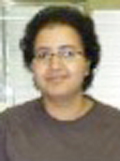
Sonia Arafah
Postdoctoral fellow (2009-2014)
Understanding how Mycobacterium marinum is able to survive and replicate in Dictyostelium discoideum
“The group uses the amoebae Dictyostelium discoideum that behaves like macrophages to study basic cellular processes but also host-pathogen interactions. Indeed, Dictyostelium is used as a host to study the pathogenesis of mycobacteria, which include Mycobacterium tuberculosis, the agent of tuberculosis, and a closely related species M. marinum. The latter bacterium has been shown to persist and replicate inside a phagosome that does not undergo maturation ( Hagedorn & Soldati, 2007 ). Thus M. marinum is able to manipulate the host cellular machinery and we try to understand how this subversion occurs. To this aim, we are developing several imaging tools to follow the infection of Dictyostelium in live cell conditions. This methods should be promising to follow the traffic of the bacterium inside the cell and to understand to which extent the M. marinum vacuole intersects with cellular processes like the autophagy pathway.”

Sabrina Mucaria
Master student (2014)
To find a new compound that is effective against M. tuberculosis, among anti-infectives identified using the D. discoideum - M. marinum host-pathogen model system
“I work together with Sebastien Kicka who started studying the structure activity relationship (SAR) of small compounds that interfere with Mycobacterium infection. We are performing a phenotypic medium throughput screen, testing compounds that interfere with infection in the model D. discoideum – M. marinum. Compared to classical compound screening against the bacterium in vitro, this in vivo model is closer to the pathology of the disease, because during infection, Mycobacterium generates a replication niche inside macrophages. Therefore, one can expect that the targets hit in our in vivo model are similar to the ones that can be used to treat an infection in human.SAR is a qualitative method that allows identifying hit compounds. The principle is simple: link variations in biological activity to changes in molecular structure. This means that the structures of compounds with a good efficacy against Mycobacterium infection are chosen as lead of a family of molecules. When a chemical group of the lead is changed, we look at the variation of the potency against Mycobacterium. In the end we have a family of molecules with the same scaffold, in which the changes in the molecules reflect their potency against Mycobacterium infection. It is like obtaining the pieces of a puzzle and assembling them to hopefully reveal the ideal structure that fits perfectly in the target in the in vivo situation. The SAR method is also used for the optimization of drugs. It is based on the same principle, but this time, a part of the puzzle is already known.The SAR model’s main advantage is that it is useful even in a phenotypic screen, because the target does not need to be known. It is exactly what we need when we are trying to find new compounds effective against Mycobacterium infection.”
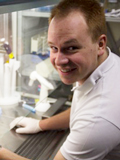
Alexandre Luscher
Master student (2013)
Understanding the major conserved role of dd5P4 in D. discoideum could give new possibilities to understand and treat the Lowe syndrome
“The goal of my research is to understand the function in Dictyostelium discoideum of a specific posphatidylinositol (PI) 5-phosphatase called dd5P4, which is the ortholog of the human OCRL1, mutations of which are responsible for the Lowe syndrome.”
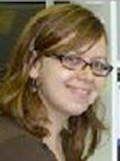
Natascha Sattler
Ph.D student (2007-2012)
Host factors important for uptake and intraphagosomal trafficking of bacteria
“Mycobacterium tuberculosis is still a major treat to human health. One third of the world population is infected with the bacterium and the rise of multi drug resistant (MDR) and extensively drug resistant (XDR) strains demonstrates the importance of better understanding how the bacterium manipulates its host. In the lab we use the genetically close cousin Mycobacterium marinum and the surrogate macrophage Dictyostelium discoideum as a host (Hagedorn & Soldati, 2007). I am personally interested in the uptake of the bacteria by their host and membrane trafficking during phagosome maturation. Upon particle adhesion, the latter is engulfed by phagocytosis. Closing of the phagocytic cup leads to the formation of a new compartment called the phagosome. This phagosome undergoes different steps of maturation by fusion with endosomal compartments. I study members of the family ofscavenger receptors, which have already been implicated in phagocytosis of certain bacteria (Philips et al., 2005) (Stuart et al., 2005) (Means et al., 2009) and trafficking of components important for the maturation of the phagosome (Reczek et al., 2007).”
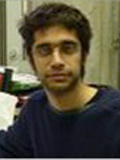
Navin Godalpass
Ph.D student (2006-2011)
Role of an unconventional myosin (myosin IB) in membrane traffic during phagosome maturation
“Both in mammalian cells and in Dictyostelium, class I myosins have been implicated in regulating endosomal functions. However, the molecular basis of how this class of motor proteins could affect endosomal functions remains unclear. The endosomal/phagosomal pathway in Dictyostelium is similar to that in macrophages. In fact the mechanisms by which Dictyostelium recognises, engulfs, kills and digests bacteria are in many ways conserved during evolution. An emerging picture is that innate immunity first appeared in social amoebae. This added to its fully sequenced and annotated genome and the ease to grow and manipulate Dictyostelium makes it an excellent model to study basic cellular mechanism.Previous studies in the lab have shown that mutants lacking myosin IB have a defect in recycling plasma membrane proteins from endosomes. We could show, using a set of biochemical techniques such as purification of latex beads containing phagosomes from different mutant cell lines that the Myosin IB recycling step occurs in the same time period as the reneutralisation step. We are currently dissecting this step using live microscopy.”
Stéphanie Hausherr
Monica Hagedorn (Jacobs University, Bremen, Germany)
Roger Monroy
Pundrik Jaiswal (Indian Institute of Technology-Madras, Chennai, India)
Miriam Essid (Institut Pasteur - FR Paris, France)
Régis Dieckmann (Medical University of Vienna (MUW), Vienna, Austria)
Ekaterina Tishchenko
Caroline Escalera
Jonathan G Matthews
Mowe Saha
Vincent Blancheteau
Kunito Yoshida (MRC Laboratory of Molecular Biology, Cambridge, UK)
Yosuke Stefan von Heyden
Daniel Gotthardt (Universitätsklinikum Heidelberg, Germany)
Frank Reichardt
Marius Stefan Pop
Frank Schönsiegel
Fengwei Wang
Hans-Jörg Warnatz
Ronald Ullmann
Narayan Agrawal
Claudia Kistler
Jean Monnat
Thorsten Lang (LIMES - Life and Medical Sciences Bonn - Research Germany)
Eva M. Neuhaus (Charité – Universitätsmedizin Berlin, Neuroscience Research Center)
Bettina Ulbricht
Eva Schwarz (Universität des Saarlandes Klinikum)
Heidrun Geissler

